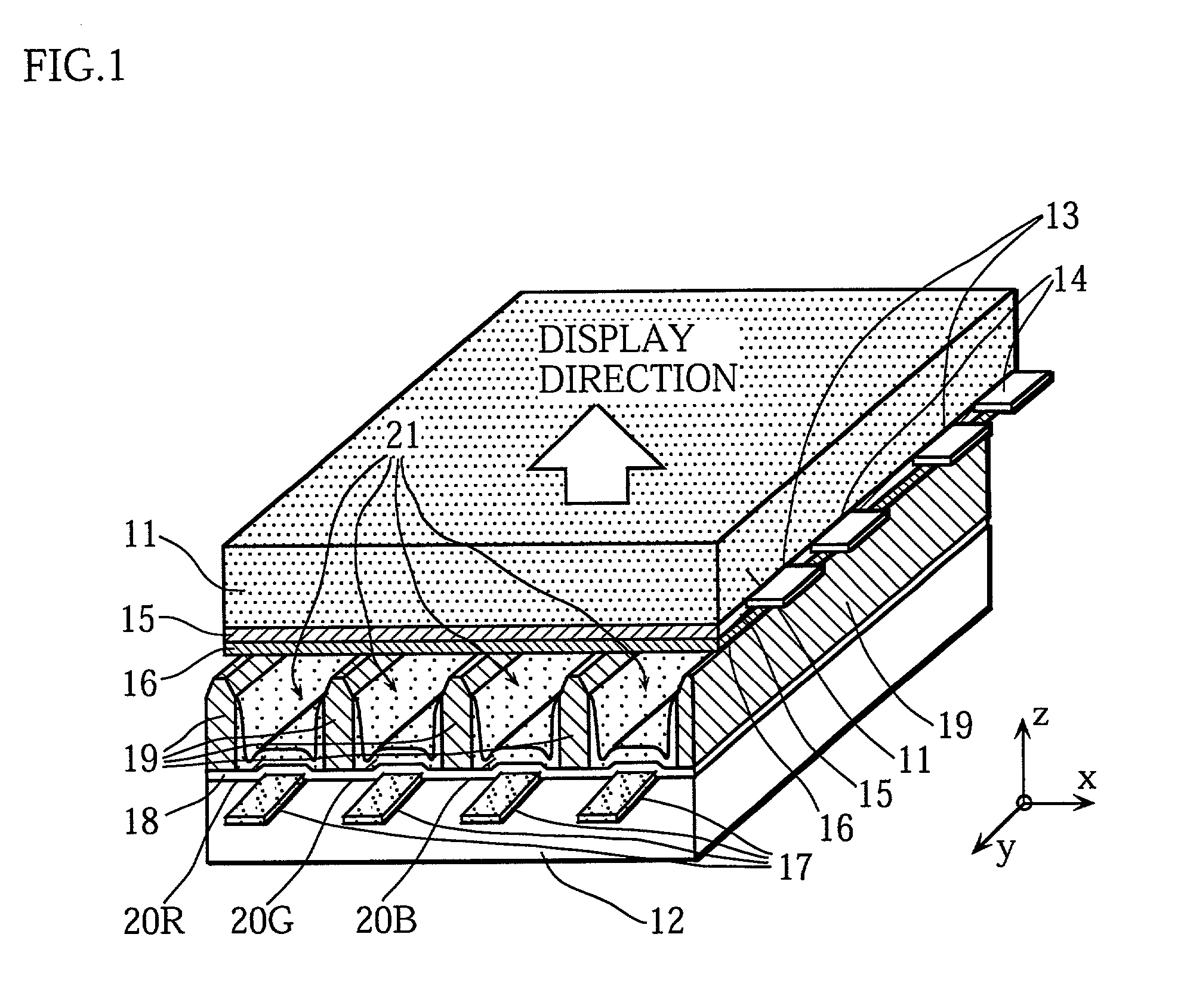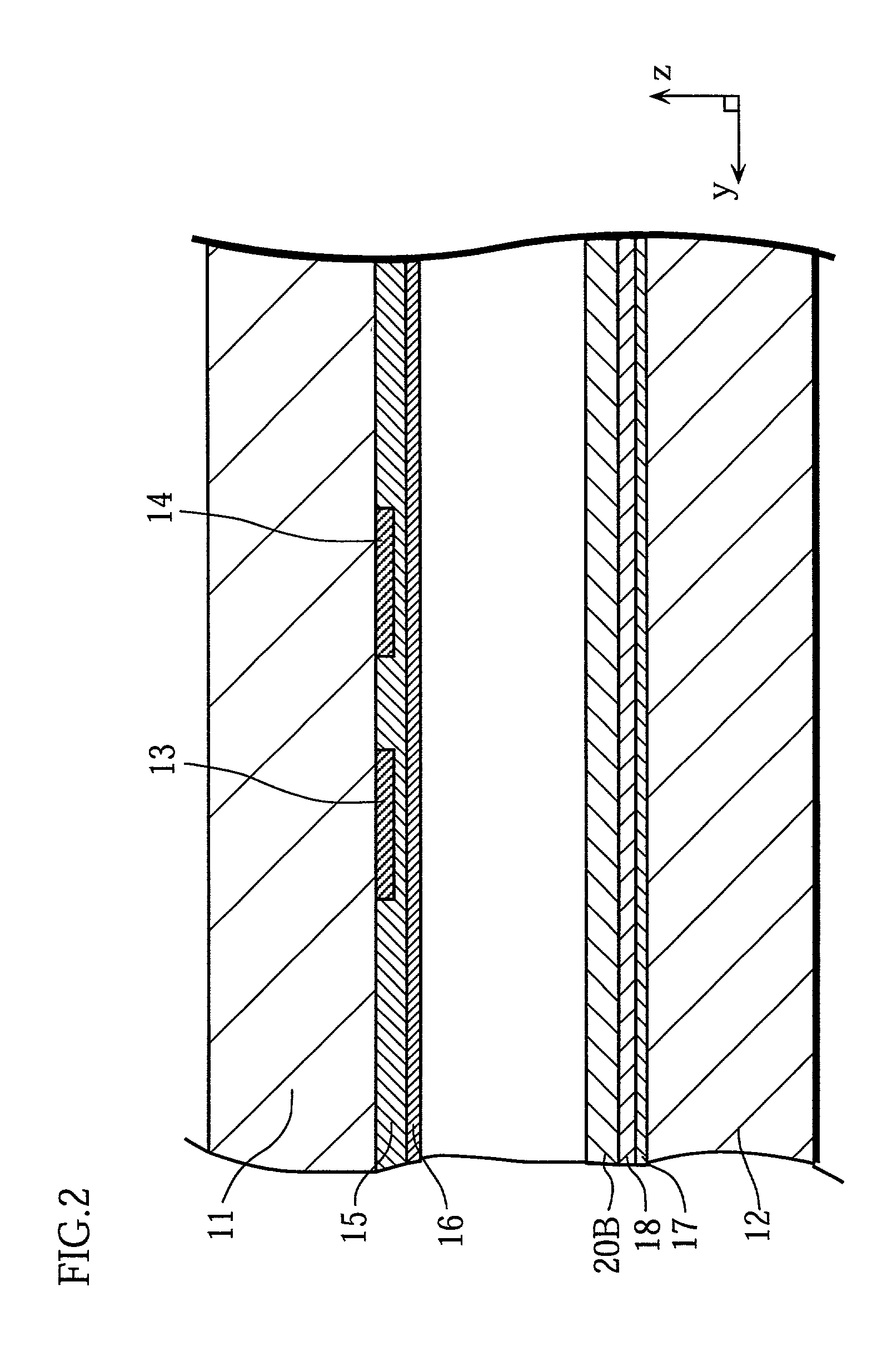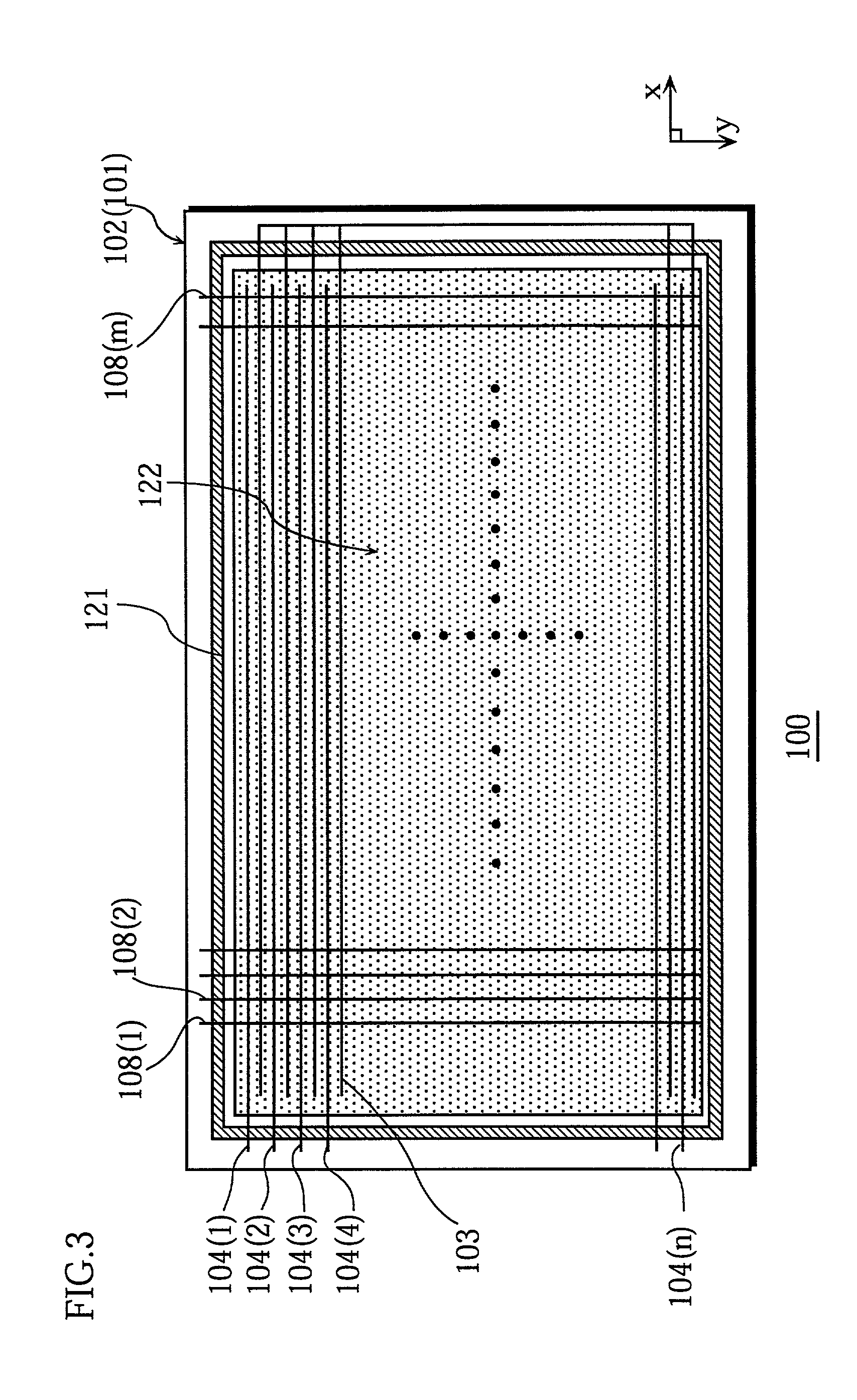Surface-discharge type display device with reduced power consumption
a display device and surface discharge technology, applied in the manufacture of electrode systems, electric discharge tubes/lamps, instruments, etc., can solve the problems of increasing the power consumption of the panel and failure to fully illuminate the desired cells
- Summary
- Abstract
- Description
- Claims
- Application Information
AI Technical Summary
Problems solved by technology
Method used
Image
Examples
first embodiment
Modifications to the First Embodiment
[0097] (1) The first embodiment describes the case where the first dielectric layer 1051 is formed so as to entirely cover the surfaces of the display electrode 103, display scan electrode 104, and second dielectric layer 1052. However, given that all the first dielectric layer 1051 needs to cover are the surfaces of the display electrode 103 and display scan electrode 104, the first dielectric layer 1051 may have a gap on the surface of the second dielectric layer 1052.
[0098] FIG. 9 is an expanded sectional view of part of a front panel according to this modification. Note here that construction elements which are the same as those in the first embodiment shown in FIG. 6 have been given the same reference numerals and their explanation has been omitted.
[0099] In the front panel shown in FIG. 9, the first dielectric layer is divided into a first dielectric layer part 1051a on the side of the display electrode 103 and a first dielectric layer part...
first experiment
Samples Nos. 1 and 2
[0103] PDP samples Nos. 1 and 2 were prepared with their front panels having the construction of FIG. 6. In the sample No. 1, the second dielectric layer was made of Na.sub.2O--B.sub.2O.sub.3--ZnO (with a relative permittivity of 6.5) and was formed using metal masking. In the sample No. 2, the second dielectric layer was made of alkoxy silane (OCD type 7 with a relative permittivity of 4, produced by Tokyo Ohka Kogyo Co., Ltd.) and was formed using nozzle injection.
Samples Nos. 3 to 5
[0104] PDP samples Nos. 3 to 5 were prepared with their front panels having the construction of FIG. 9. In the sample No. 3, the second dielectric layer was made of Na.sub.2O--B.sub.2O.sub.3--ZnO (with a relative permittivity of 6.5) and was formed by performing an application step, a drying step, and a firing step using metal masking. In the sample No. 4, the second dielectric layer was made of Na.sub.2O--B.sub.2O.sub.3---ZnO (with a relative permittivity of 6.5) and was formed by ...
second embodiment
Modifications to the Second Embodiment
[0136] (1) The second embodiment describes the case where the display electrode 103 and the display scan electrode 104 are formed directly on the front glass substrate 101 in the front panel. However, the positions of the display electrode 103 and display scan electrode 104 in the front panel are not limited to such. For example, a dielectric layer may be inserted between the front glass substrate 101 and each of the electrodes 103 and 104 to insulate each of the electrodes 103 and 104, with the groove 207 being interposed between the electrodes 103 and 104.
[0137] FIG. 14 is an expanded sectional view of part of a front panel according to this modification.
[0138] As shown in the drawing, this front panel includes the front glass substrate 101, a display electrode 203, a display scan electrode 204, dielectric layers 215a and 215b, and the protective film 206.
[0139] The dielectric layer 215a whose surface has a groove is formed on the surface of t...
PUM
 Login to View More
Login to View More Abstract
Description
Claims
Application Information
 Login to View More
Login to View More - R&D
- Intellectual Property
- Life Sciences
- Materials
- Tech Scout
- Unparalleled Data Quality
- Higher Quality Content
- 60% Fewer Hallucinations
Browse by: Latest US Patents, China's latest patents, Technical Efficacy Thesaurus, Application Domain, Technology Topic, Popular Technical Reports.
© 2025 PatSnap. All rights reserved.Legal|Privacy policy|Modern Slavery Act Transparency Statement|Sitemap|About US| Contact US: help@patsnap.com



